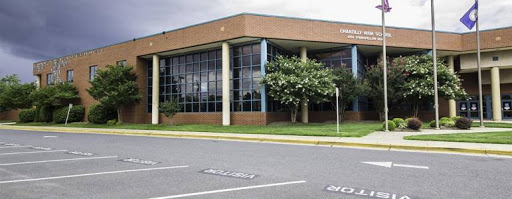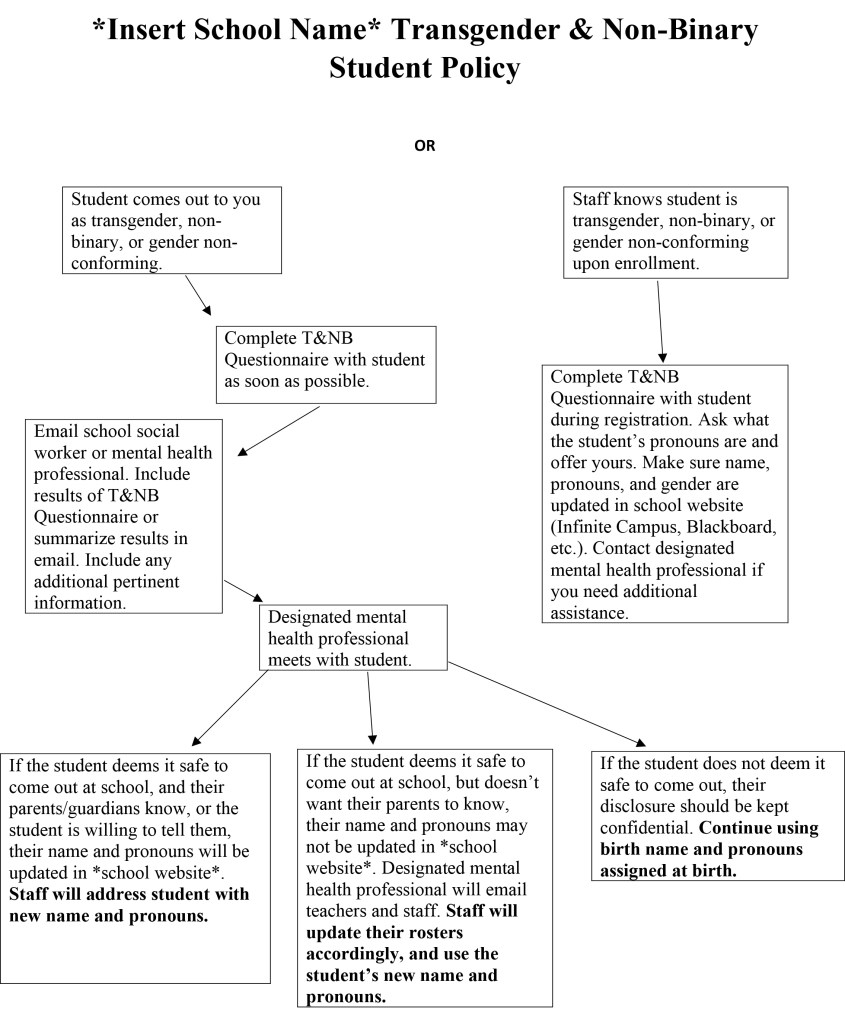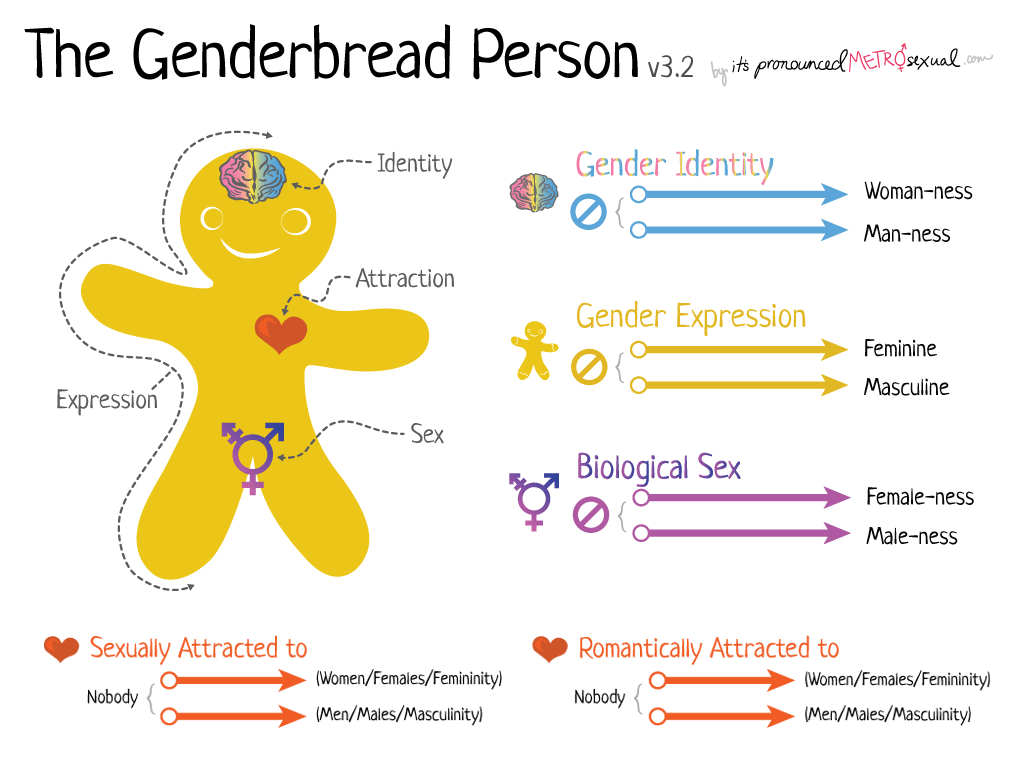
“For me, it was never a question of whether or not I was transgender. It was a question of what I’d be able to handle transitioning and having to do it in the public eye.”
Chaz Bono
According to the Parent Institute, an organization based out of Fairfax, VA, children spend about 13.36% of their lives in school by the age of 18. This estimate does not include extracurricular activities, time spent doing homework or studying, or time spent thinking about school. For many children and adolescents, school is their life—it’s where they hang out with friends, learn what subjects interest them, and have time away from their parents and guardians to explore what mental health providers refer to as differentiation of self (child develops identity separate from caregivers).
For transgender and gender non-conforming (GNC) youth, school plays a gigantic role in the transition process. As acceptance of trans and GNC folx has become more widespread, more and more kids feel comfortable coming out of their shells. While Gender & Sexuality Alliances (GSA), formerly known as Gay-Straight Alliances, are more prevalent than ever before, many schools are still struggling to come up with protocol for how to help trans and GNC students transition within the school system.
Policies & Procedures
Schools in Texas continue to make headlines over arguments about whether trans kids should be able to use the bathroom that matches their gender identity. When juxtaposed next to Denver Public Schools, who are beginning to offer trainings about ways to support LGBTQIA+, protocols and protections for queer youth, and resources and supports for adolescents and their families, we see that there is a tremendous gap between how different schools are supporting their students.
Having protocols in place to support students when they come out as trans or GNC is crucial to their ongoing success at school. Gender spectrum’s “Gender Inclusive Schools Toolkit” is a comprehensive outline for gathering data about where a student is in the transition process. For teachers and staff who may not have time to complete the full form, we’ve included an abbreviated document for gathering the basics.
In addition to forms for gathering information, it is important to have specific policies and procedures in place. Below is a sample procedure—we’ve attached the word document here so you can customize it as necessary. We’ve also attached an FAQ for teachers and staff regarding ways to be more trans-inclusive in the classroom. Be sure to read over this document and insert applicable information before distributing to staff. For a more in-depth look at how to make your school more inclusive, click here.

Gender & Sexuality Alliance (GSA)
Much like transgender and gender non-conforming youth, Gender & Sexuality Alliances come in all different shapes and sizes. Some GSAs are held during lunch as an informal, but confidential space for students to hang out and eat, while other GSAs are more structured. Every GSA should be sponsored by an open and knowledgeable staff member, and conducted in partnership with students.
For after-school programs or GSA classes, facilitators should consider community engagement activities, lectures or group discussions, and lessons related to self-exploration. All Gender & Sexuality Alliances should acknowledge LGBTQIA+ specific holidays or days of remembrance, such as the International Day of Transgender Visibility.
Some of the topics we chose to focus on in our curriculum were:
- Appropriate language
- Gender vs. Sexuality
- Intersectionality
- Allies & the coming out process
- Trans & GNC experiences (passing privilege, etc.)
- Popular queer celebrities
- Intersex & 2 Spirit Topics
“Congratulations” & “Get Well Soon” Card Activity
As a teacher, it is important to always have a backup activity on hand in case students finish an assignment early. When students finish their work early, have them make “get well soon” cards for individuals who have recently had Gender Confirmation Surgery (GCS) or “congratulations” cards for folx who have recently started HRT (or had GCS). These cards should always be positive and heartfelt, but vague enough to apply to almost any situation. Facilitators should contact a local hospital that provides GCS and HRT services to local transgender and gender non-conforming folx, and see if they would be willing to distribute the cards as needed.
This activity involves students in the community and helps trans and GNC folx receiving GCS or HRT feel less alone.
Group Guidelines
Have students start every meeting by saying their name and pronouns. Even if there are no trans or GNC students in your GSA it is important to teach them ally etiquette. Students should never be asked to disclose their reasons for attending GSA meetings, and no student should ever be turned away based on their race, sexual orientation or gender identity. Try to establish a routine with every meeting and open with an icebreaker activity when applicable.
Additional Resources & Materials
For more structured GSA lesson plans, check out the Safe Zone Project’s “curriculum” page or True Colors’ GSA Curriculum.

Sports & Athletics
Chris Mosier, an Olympic triathlete and advocate for transgender rights, compiled a comprehensive list of policy suggestions for schools and coaches to best support transgender athletes. While all of us at Out of Yer Shell value exercise and enjoy some sports (let’s be real, we’re all about Quidditch here), we’re not Olympic athletes, and are excited to let somebody who’s more knowledgeable give advice about the things he’s good at. Click on the picture below to go to learn more about ways to support transgender athletes:

